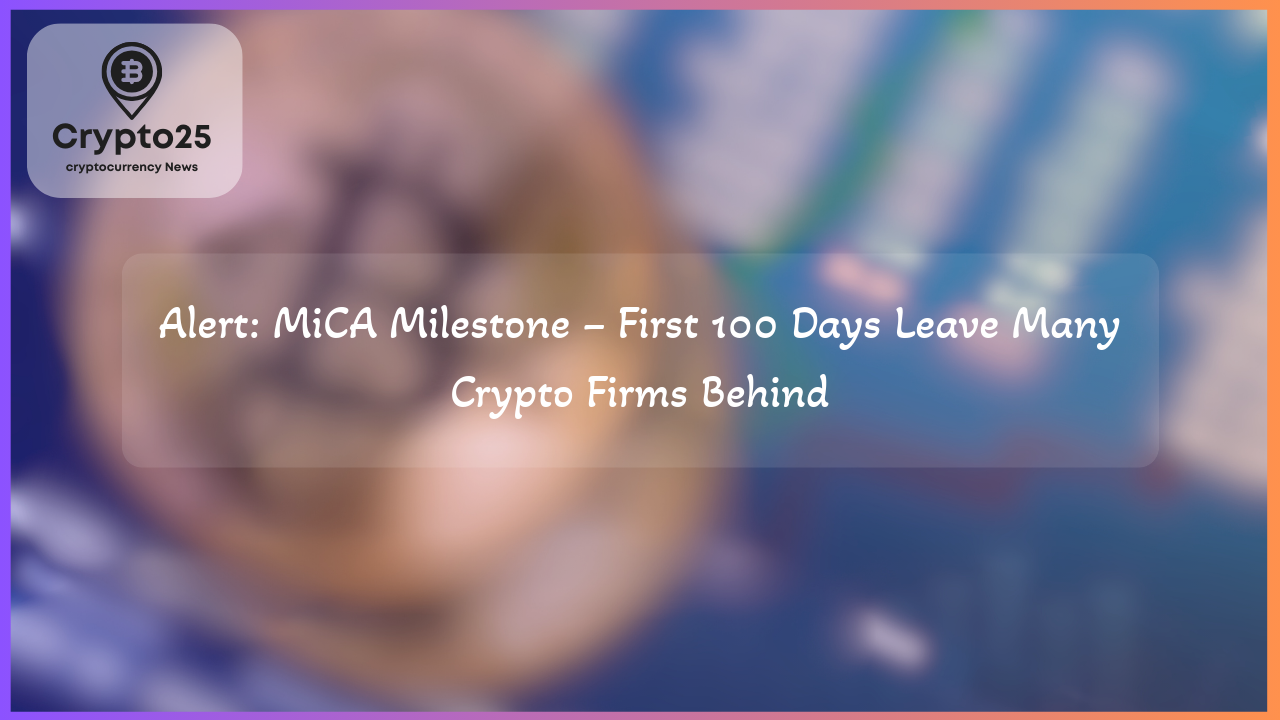
The European Union’s Markets in Crypto-Assets (MiCA) framework, which went into effect 100 days ago, has sent ripples across the cryptocurrency industry as firms race to achieve compliance. MiCA aims to establish clear rules for crypto-assets, stablecoins, and service providers operating in the European Economic Area (EEA). However, the slow pace of authorizations reveals the challenges faced by the industry in adapting to this landmark regulation.
## MiCA’s Impact on Stablecoin Issuers
Since its implementation, MiCA has significantly impacted stablecoin issuers, particularly those seeking to issue e-money tokens (EMTs) tied to fiat currencies like the euro or US dollar. According to reports from the European Securities and Markets Authority (ESMA), only 11 stablecoin issuers across six EU countries have received approval within the first three months. So far, regulators have approved 16 e-money tokens, including 10 pegged to the euro and six to the dollar.
Notable MiCA-compliant entities include Circle, the issuer of USDC, alongside other companies such as Banking Circle, Fiat Republic, and Membrane Finance. These firms are positioning themselves strategically to capitalize on the expanding digital finance ecosystem. However, the absence of Tether, the issuer of USDT—the world’s largest stablecoin—has raised eyebrows. Tether has faced delistings across various EU platforms due to its non-compliance with MiCA standards. Despite this, the company has signaled efforts to meet regulatory requirements through investments in firms like Quantoz Payments and its Handron platform, which could pave its way to compliance under this evolving framework.
## Challenges for Crypto-Asset Service Providers Under MiCA
The application of MiCA doesn’t just stop at stablecoins. Crypto-asset service providers (CASPs) have also been grappling with the complex demands of these regulations. ESMA reports that only 15 CASPs have successfully obtained licenses, a small number when considering the sheer size of Europe’s crypto ecosystem. This list includes well-known global platforms like Crypto.com, OKX, Bitpanda, and eToro, alongside traditional financial players such as BBVA, Flatex, and Clearstream, signaling that both crypto-native firms and established institutions are paying close attention to regulatory expectations.
Interestingly, certain firms previously named as authorized CASPs, such as MoonPay and Hidden Road, no longer appear in ESMA’s registry, suggesting possible status changes or further scrutiny from authorities. Different EU member states are also advancing at varying speeds, with Germany emerging as a regional leader, boasting six licensed providers, closely followed by Malta, which hosts five.
| CASP Leaderboard | Licensed Providers |
|---|---|
| Germany | 6 |
| Malta | 5 |
## Gaps and Enforcement in the MiCA Era
Despite the progress made, MiCA compliance still presents notable gaps within the crypto landscape. Asset-referenced token (ART) issuers—those whose assets are tied to commodities or fiat currencies—have yet to receive any approvals. Additionally, regulators have reported only 25 white papers filed for digital assets outside of EMT and ART categories, which include major cryptocurrencies such as Bitcoin and Ethereum. This suggests that many players are still testing the waters when it comes to tackling MiCA’s rigorous requirements.
The intensified scrutiny reflects growing enforcement measures under the new framework. For example, Italy’s financial authority, CONSOB, recently added 15 entities to its non-compliance list, demonstrating that regulatory bodies are prepared to ensure adherence to MiCA rules. This has put added pressure on firms to expedite licensing processes to avoid operational disruptions within the EEA. Without a MiCA license, companies are unable to “passport” their services across all 30 EU member states, limiting their growth potential in one of the world’s most advanced crypto markets.
## The Road Ahead for MiCA Compliance
The implementation of MiCA is a critical step in creating a unified cryptocurrency market across Europe. However, the limited number of approvals among stablecoin issuers and CASPs highlights the industry’s struggle to adapt to strict regulatory requirements. As companies race to secure compliance, MiCA is ushering in a more structured digital finance ecosystem but one that demands careful navigation by stakeholders.
With increasing enforcement efforts and growing competition among firms, those who achieve early compliance are likely to gain a competitive edge. At the same time, regulators must ensure that their rules foster innovation without stifling growth. As the EU’s cryptocurrency regulation continues to evolve, its success will depend on the ability of regulators and market participants to find the right balance between oversight and innovation, setting a global standard for digital asset governance.
